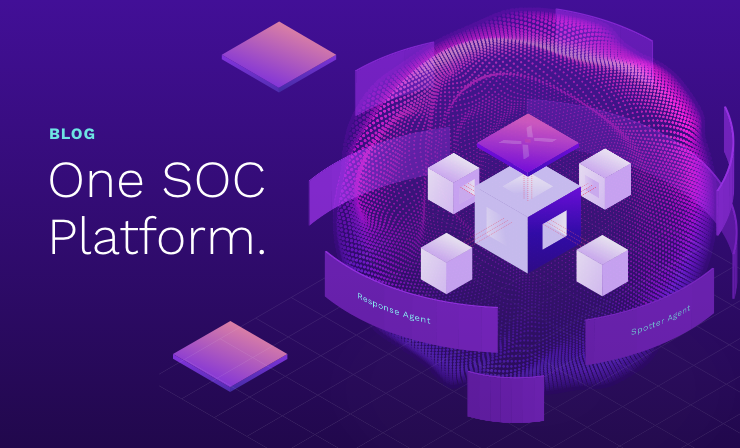- Why Securonix?
- Products
-
- Overview
- Securonix Cloud Advantage
-
- Solutions
-
- Monitoring the Cloud
- Cloud Security Monitoring
- Gain visibility to detect and respond to cloud threats.
- Amazon Web Services
- Achieve faster response to threats across AWS.
- Google Cloud Platform
- Improve detection and response across GCP.
- Microsoft Azure
- Expand security monitoring across Azure services.
- Microsoft 365
- Benefit from detection and response on Office 365.
-
- Featured Use Case
- Insider Threat
- Monitor and mitigate malicious and negligent users.
- NDR
- Analyze network events to detect and respond to advanced threats.
- EMR Monitoring
- Increase patient data privacy and prevent data snooping.
- MITRE ATT&CK
- Align alerts and analytics to the MITRE ATT&CK framework.
-
- Resources
- Partners
- Company
- Blog
Information Security
By Vinny Sharma, Director, Marketing APAC, Securonix
Marketing is fundamentally a profession that involves communication and interaction with multiple people. It is therefore no surprise that it constantly evolves to utilize new technologies to facilitate these interactions. The 20th century saw inventions like private cars and airplanes that reshaped society, but perhaps the biggest change came with the advent of computers and the internet. Societies and businesses are now increasingly networked and while this Digital Revolution has unlocked a variety of new possibilities for marketers to reach and interact with prospective customers, it also comes with the specter of cybersecurity threats. This then begs the question — what does marketing look like in today’s digital world and what role does cybersecurity play?
An increased attack surface
The first thing to understand is just how much marketing departments use digital tools. In an era of smartphones and social media, digital marketers have access to not only a treasure trove of data that gives them a granular understanding of customer behavior and preferences, but also a host of new avenues through which to reach them such as email campaigns, social media, and online ads. Many also work on cloud platforms like Microsoft 365 and Google Workspace, where important documents and data are stored in the cloud.
What this all means is that there is a wide attack surface for cyber threat actors to exploit. A breach, whether by an external actor or an insider, can leave sensitive customer information and proprietary marketing material vulnerable to theft. There is thus a need to be cognizant of developments in the cybersecurity landscape, both in terms of new threats as well as customer perceptions around data security. Here are a few steps that marketing departments can take:
- Basic security hygiene
The first step is to ensure that cybersecurity measures are employed diligently. Organizations should establish safe and secure protocols for the collection, processing, and storing of data. From an individual standpoint, it is advised to implement secure log-in processes like multi-factor authentication, and encourage employees to use password management tools for all their accounts (personal and work related). It is important to remember that these practices should not just be relegated to desktops and laptops, as smartphones are just as important, if not more so.
- Data minimization
Much of the internet economy is predicated on the transfer and processing of data. However, there are significant concerns regarding potential misuse of data, as it can be used to create fairly accurate profiles of individuals. While this is a competitive advantage for digital marketers, it is important to ensure that the collection of this data is minimized to the maximum extent possible. Legislative developments across the world like the European Union’s General Data Protection Regulation (GDPR) have introduced the concept of purpose limitation. This is a principle that marketers would do well to heed. If they only collect as much data as they need, only process it to the extent required, and do not store it longer than necessary, it not only assuages privacy concerns but also limits the amount of data that is vulnerable to attacks.
- Keeping the trust
As mentioned earlier, concerns about potential privacy infringements have been rising, especially after major news developments like Edward Snowden’s PRISM leaks and the Cambridge Analytica case. Regardless of whether you are in the marketing department for a data processing or cybersecurity company, it is important for anyone collecting data to be cognizant of these concerns. It is not enough just to have good data security practices implemented. Marketers should also clearly communicate the extent of the data processing that is taking place and assuage any concerns about potential misuse or breaches.
There is a long history of the different ways in which technology has impacted society and changed the way people live and work. The Digital Revolution that has taken place in the last few decades is on par with the Industrial Revolution in terms of the scale of its impact. Marketing professionals have been gifted with a variety of new tools that have exponentially increased the scale of their outreach. But these new possibilities come with attendant responsibilities, and it is important that they adapt their practices to avoid the pitfalls of marketing in a digital world.







